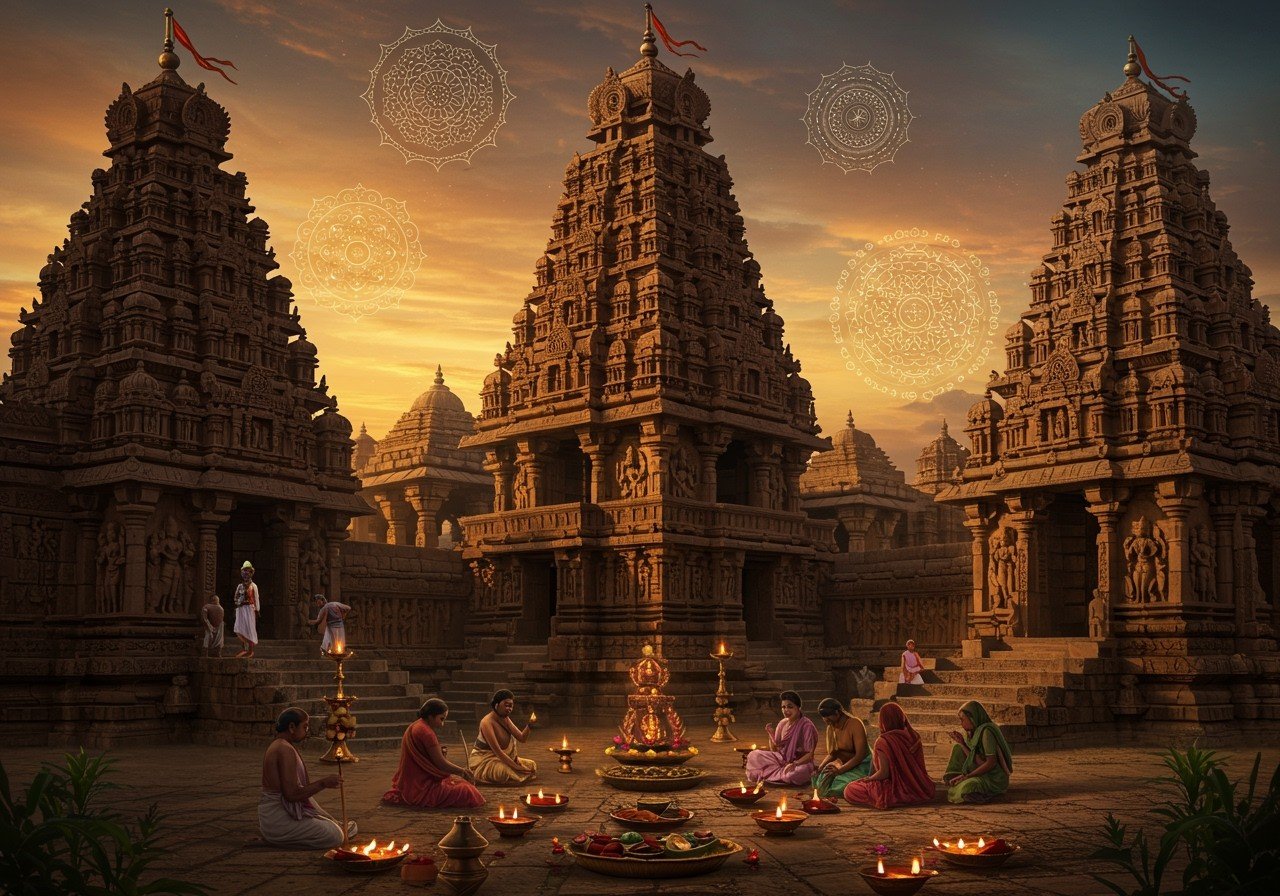
The Kakatiya Dynasty, which reigned over the eastern Deccan region (present-day Telangana, India) from the 12th to 14th centuries, left a rich legacy of religious and cultural practices. While early rulers showed an affinity for Jainism, evident in structures like the Padmakshi temple at Hanumakonda, Hinduism, particularly Shaivism, became the dominant faith. This article delves into the religious landscape of the Kakatiya era, exploring the prominent deities, the rise of Shaivism, and the magnificent temples that stand as testaments to their devotion.
The Socio-Political Influence of Religion
Religion played a crucial role in shaping the socio-political dynamics of the Kakatiya Dynasty. It served as a unifying force, consolidating the power of rulers like Rudradeva and Prataparudra II. The capital city, Warangal, became a hub of religious activity, with royal patronage extending to various religious institutions. This support fostered a vibrant religious atmosphere and contributed to the dynasty’s stability.
The Deities of the Kakatiya Dynasty
While Lord Shiva held the paramount position as the principal deity, the Kakatiya religious landscape encompassed a diverse pantheon. Various sects of Shaivism, such as the Kalamukha and Pasupata, flourished under royal patronage. Alongside the reverence for Shiva, other deities like Vishnu and forms of Shakti also received veneration, reflecting a syncretic approach to faith. Local deities and folk traditions further enriched the religious tapestry, demonstrating a blend of mainstream and regional religious expressions.
The Rise of Shaivism
The Kakatiya period witnessed the ascendancy of Shaivism. The construction of magnificent Shiva temples, like the Thousand Pillar Temple, became symbols of royal piety and architectural prowess. The influence of Shaiva saints and the Lingayat movement further propelled the spread of Shaivism, both within the kingdom and beyond its borders. This emphasis on Shaivism contributed significantly to the religious identity of the era.
Architectural Marvels: The Kakatiya Temples
The Kakatiya Dynasty left an indelible mark on Indian architecture with its stunning temples. Structures like the Thousand Pillar Temple, Ramappa Temple, and the Warangal Fort exemplify the architectural brilliance of the era. Intricate carvings, the skillful use of granite, and innovative construction techniques characterize these temples. They served not only as places of worship but also as centers of social and religious gatherings, reflecting the integral role of religion in daily life.
Festivals and Rituals: Expressions of Faith
Religious festivals and rituals formed an essential part of the Kakatiya religious experience. Celebrations like Maha Shivaratri were observed with great fervor, accompanied by elaborate rituals both in temples and homes. Music, dance, and dramatic performances enriched these festivities, creating a vibrant cultural atmosphere that involved all strata of society. These celebrations reinforced community bonds and expressed the deep-rooted faith of the people.
The Enduring Legacy of Kakatiya Religious Practices
The religious practices of the Kakatiya Dynasty continue to resonate in present-day Telangana. The worship of traditional deities, the preservation of temple rituals, and the architectural influence on contemporary structures all bear witness to the enduring legacy of the Kakatiyas. Ongoing efforts to revive and promote Kakatiya heritage underscore the importance of these traditions in shaping cultural identity and fostering a sense of historical continuity.
Poojn.in: Connecting You to the Kakatiya Heritage
Poojn.in, India’s leading online store for cultural and religious goods, offers a wide range of products that resonate with the Kakatiya tradition. We understand the significance of maintaining these ancient practices and offer a convenient way to access authentic items for your religious needs.
- Brass and Copper Items: Just like the intricate metalwork found in Kakatiya temples, we offer a selection of authentic brass and copper puja items, allowing you to bring the sacred atmosphere into your home. Our collection includes traditional lamps, statues, and vessels, perfect for creating a dedicated space for worship.
- Puja Items for Shaivite Worship: Honor Lord Shiva, the principal deity of the Kakatiyas, with our specially curated collection of Shaivite puja items. From rudraksha beads and Shiva lingams to incense and dhoop, we provide everything you need for traditional Shiva puja.
- Incense and Dhoop: Create a sacred ambiance with our high-quality incense and dhoop, reminiscent of the fragrant atmosphere of Kakatiya temples. Choose from a variety of traditional fragrances to enhance your spiritual experience.
Explore our complete collection at www.poojn.in and discover how we can help you connect with the rich religious heritage of the Kakatiya Dynasty.


